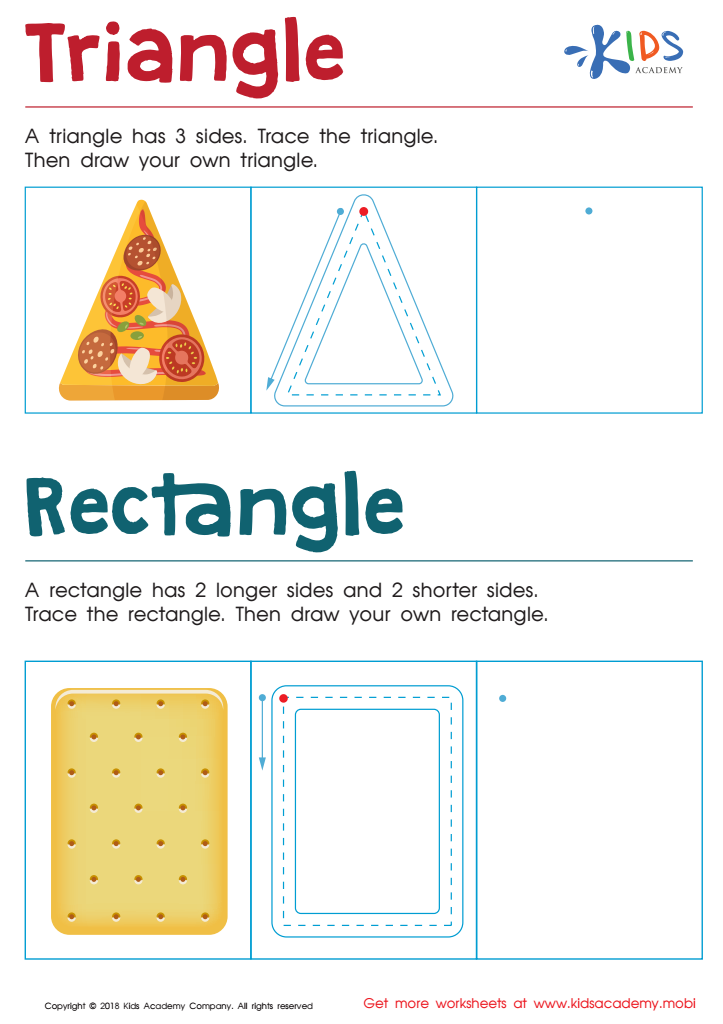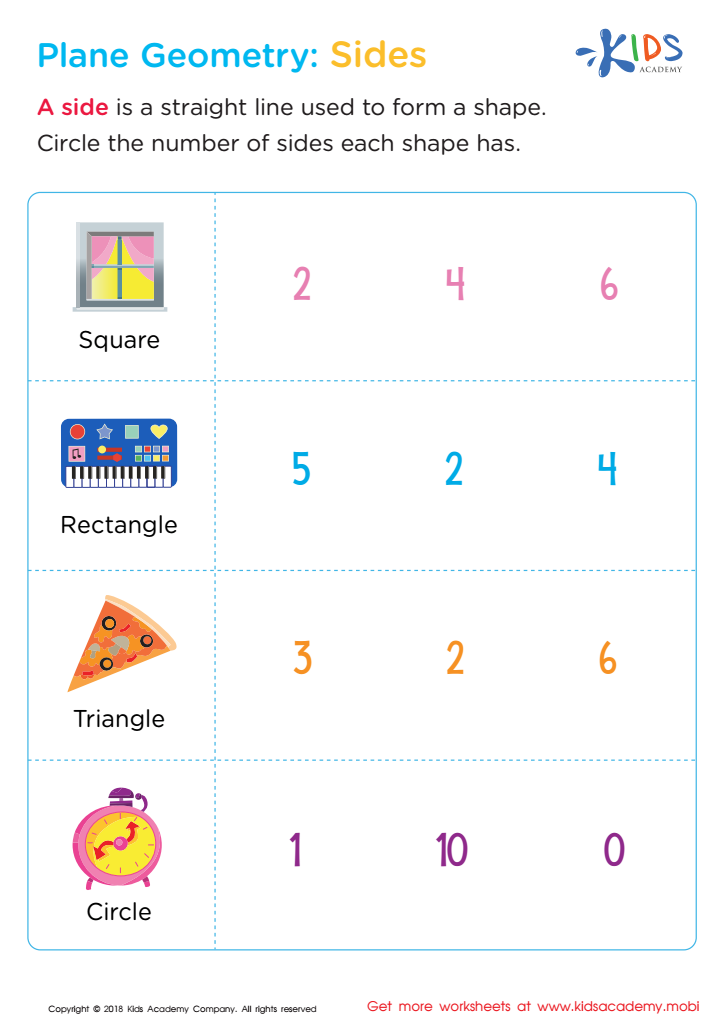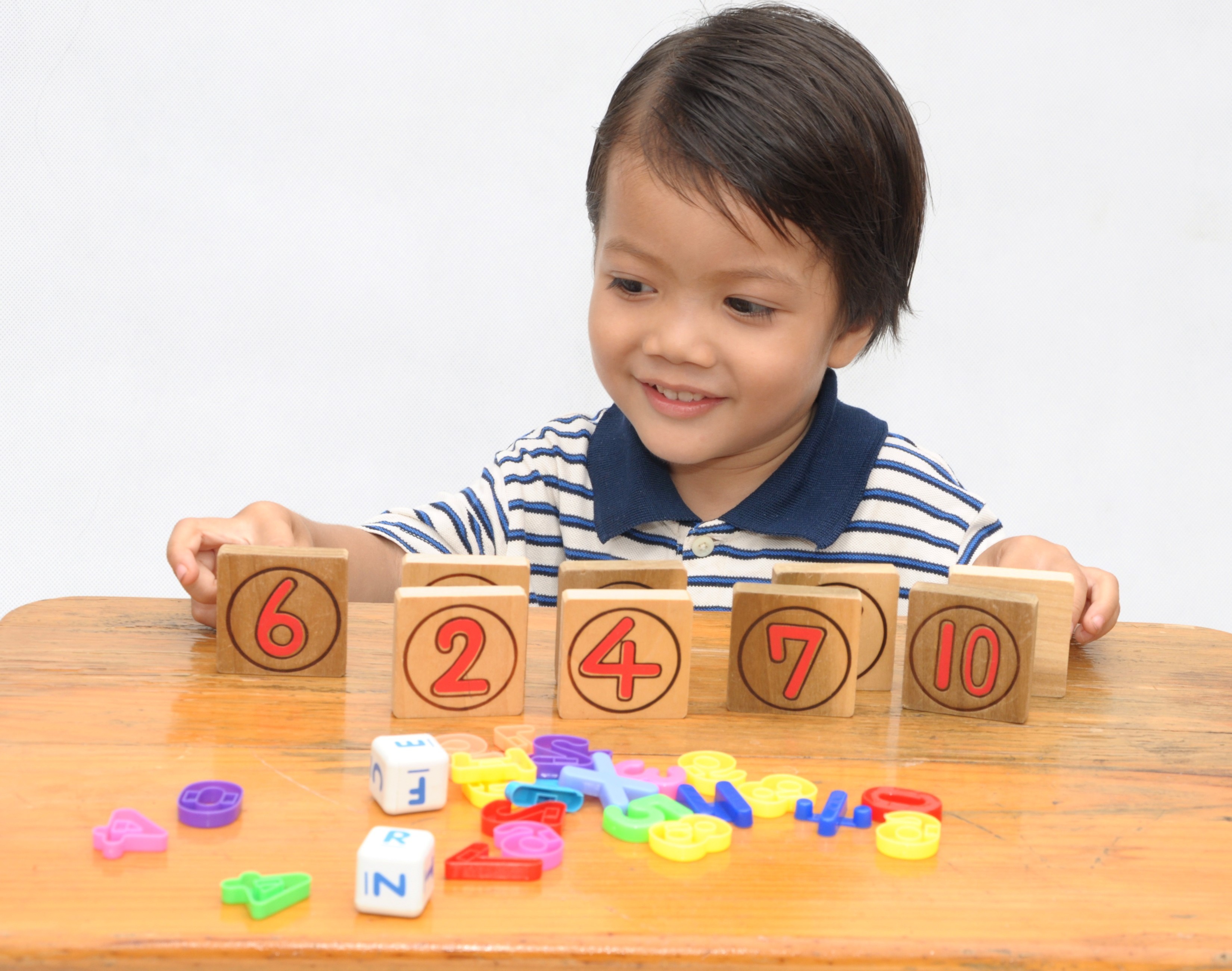Differentiating shapes Normal Math Worksheets for Ages 6-8
3 filtered results
-
From - To
Explore our engaging Differentiating Shapes Normal Math Worksheets, specifically designed for children ages 6-8. These worksheets help young learners recognize, compare, and categorize various shapes, laying the foundation for critical thinking and spatial awareness. With vibrant illustrations and interactive activities, students will delight in identifying shapes in different environments, enhancing their understanding through playful learning. Ideal for both classroom and home use, our worksheets cater to diverse learning styles, ensuring every child actively participates. Equip your students with essential math skills while fostering a love for learning with these valuable resources. Download now and watch your children excel in shape differentiation!


Triangle Rectangle Worksheet


Plane Geometry: Sides Worksheet


3D Shapes Worksheet
Differentiating shapes in math for children ages 6-8 is crucial for several reasons. At this developmental stage, children are developing their cognitive skills and beginning to understand abstract concepts. Learning about shapes forms the foundation for important mathematical concepts, such as geometry and spatial awareness. By engaging with different types of shapes—such as circles, squares, triangles, and more complex figures—children start to recognize their characteristics and properties, aiding in critical thinking.
Additionally, differentiating shapes helps accommodate diverse learning styles and paces among students. Not all children grasp concepts in the same way or at the same speed. By providing varied activities, such as hands-on experiences, visual aids, and integration with art and play, educators can ensure that every child can connect with the material in a way that resonates with them.
Moreover, understanding shapes is not only a basis for higher-level math but is also applicable in everyday life—recognizing shapes helps children navigate their environment better and supports their problem-solving abilities. Lastly, when parents are involved in this learning, they reinforce concepts at home, fostering a positive relationship with math and helping to build confidence in their children's abilities. Therefore, both teachers and parents play a crucial role in this formative learning phase.
 Assign to My Students
Assign to My Students




















